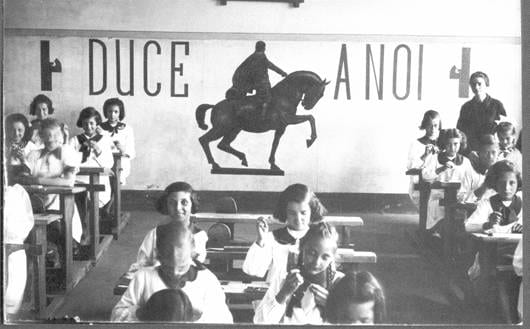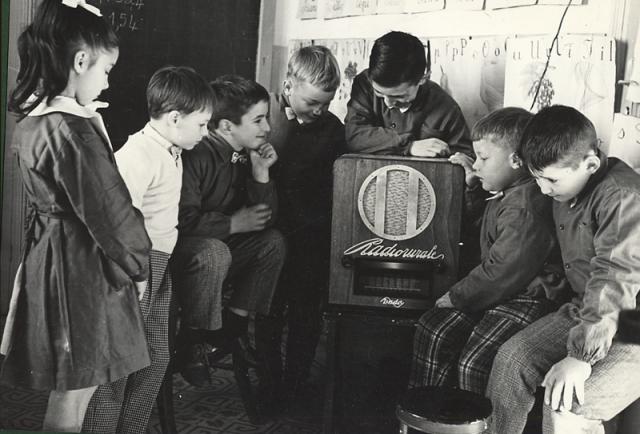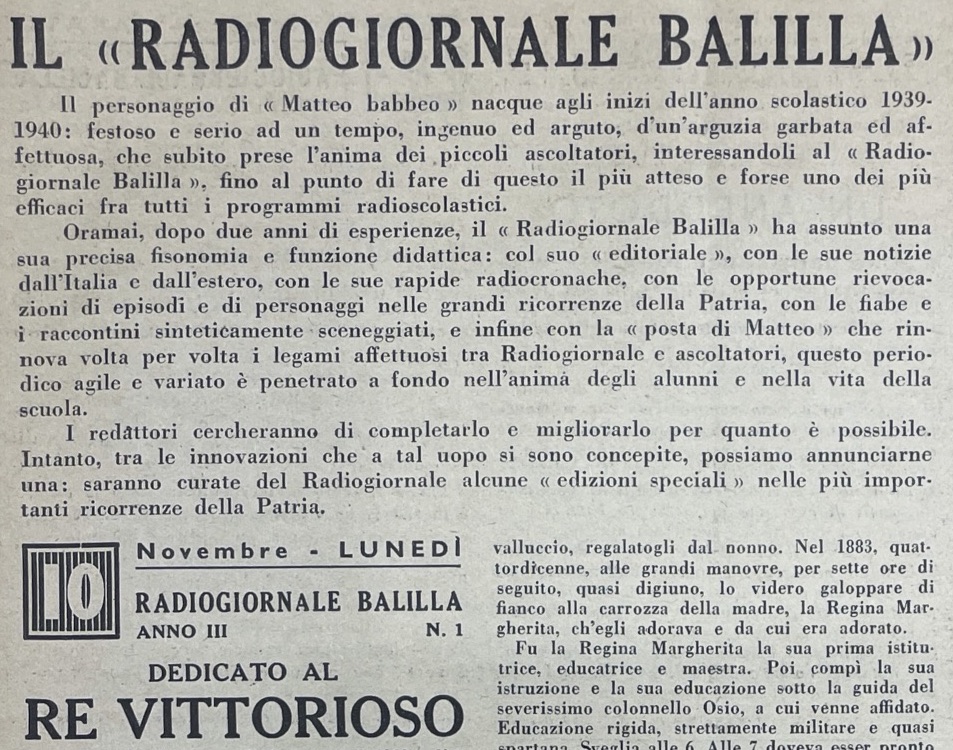

Beginning in the second half of the 1920s, Fascism became a totalitarian dictatorship: a political system in which all power was controlled by a single party and leader, Benito Mussolini. He dominated society through centralized control of politics, the economy, and culture. He imposed a single ideology to guide widespread consensus. The Fascist regime made the most of the “new” means of mass communication, allowing the party’s ideals to spread rapidly. The state took complete control of the means of propaganda: cinema, radio, and newspapers, which were subject to strict censorship. Radio was the primary propaganda tool and became the official voice of the state: speeches by the Duce, official marches, and discussions on racism were broadcast.
The press was also a useful propaganda tool, so much so that the regime bought important newspapers to control information. The newspapers portrayed the Fascist period as a historical model of peace and morality, censoring all news of crime and economic failure. Mussolini appointed a director, a member of the Fascist Party, in charge of each newspaper. In addition, each newspaper was subject to an inspection before publishing the news: all documents deemed dangerous or contrary to the regime were confiscated.
